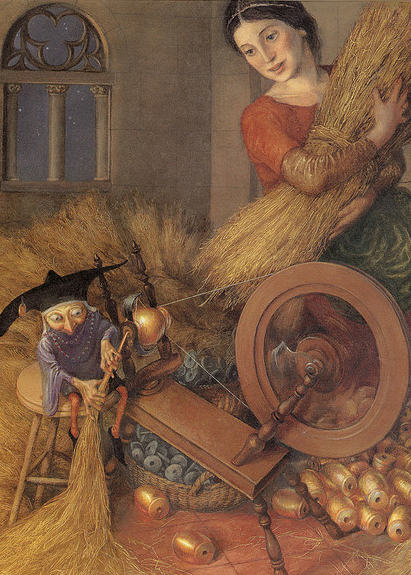Are others tying you in knots?
Can you solve the following dilemma taught by Zen Buddhists? Be aware that logic will not solve this problem. Zen philosophy often emphasizes “enlightenment” over logic:
You are a student of the Zen Master. He invites you to his house for a cup of tea. As you pick up your cup of tea, the Zen Master pulls out a large stick he has hidden under the table. He says, ‘This is your lesson for today. If you pick up the cup of tea, I will hit you with this stick. And if you don’t pick up the cup of tea, I will hit you with this stick'”
(Carter, 2003, p. 18).
As a college interpersonal communication instructor, I present this theory to my students and ask for their response. I got this idea from author and psychologist, Dr. Jay Carter. My student responses mirror his. He says:
I have presented this problem to thousands of people in my classes. Nine-five percent of them have been so caught up in the logic of the problem and the thinking of a solution that they could not solve it. A typical answers is, ‘Well, I would drink the tea. As long as I’m going to get hit anyway, I may as well enjoy it.’ Other people say, ‘I would slap the [Zen] Master in the face and get one in before he hits me.‘
(pp. 18-19).
- There are two answers that will solve the problem. One is a good answer because it solves the problem while still maintaining a relationship with the [Zen] Master: The answer is to take the stick away.
- The other answer is to walk away. This answer solves the problem but cuts off further interaction with the [Zen] Master”
Again, solving this problem requires awareness, not logic–meaning awareness of the Zen Master’s intent and strategy. How many of us have found ourselves in this position? How many of us are even aware when we are thrust into this mind game? And, are we aware if/when we ourselves create the dilemma? This dilemma is a common coercive tactic but often occurs in the form of unwritten rules and expectations. The coercer puts us in a position where we are wrong if we do, and wrong if we don’t. Since we cannot “win,” we feel trapped and bound by the coercer’s double bind maneuver. Here’s an example from Dr. Carter:
A woman attending my classes was very excited about the work we were doing. Her behavior was changing. She was gaining confidence and becoming more self-assured. Her husband was threatened by this and felt out of control. He gave her this ultimatum. ‘It’s either that class or our marriage.’ Logically, the choice is easy. No one is going to give up a marriage just for the sake of attending a class. How would it sound to say to everyone, ‘I gave up my marriage to attend Dr. Carter’s class?‘ The wife took a look at the game. She saw the typical elements of control:
- It was his game.
- It had the threat of a disastrous effect on her.
- The outcome was all up to her.
- She was totally responsible for her reaction to his threat.
So what was “the stick” here? The stick was the choice. Here is the way she handled it with him. She said, ‘I am not going to choose’ (that is, ‘I’m not going to play your game’). ‘I am going to attend class, and you can choose; our marriage or this class.’ To defeat this double bind, she threw her husband’s game right back into his lap. When you give the [coercer or manipulator] the responsibility for his or her actions, he or she will almost always back down“
(pp. 22-23).
In this example, the woman chose “to take the stick away” and still maintain a relationship with her husband (who, in this case would be the “Zen Master” who presents the dilemma).
The second choice involves disengaging completely from the Zen Master. If we are in a relationship where the perpetrator or Zen Master refuses to acknowledge “the stick” and/or the dilemma he or she is presenting to us, then the reasonable, emotionally healthy solution would be for us to label the dilemma for what it is and walk out of the relationship.

“Rumplestiltskin,” Artist Unknown
Double Bind Theory
A double bind is an emotionally distressing dilemma in communication when a person or group receives two or more conflicting messages, and one of those messages negates the other–making the other person (or group) automatically wrong regardless of his or her response. These relationships are stressful, confusing, and anxiety producing. The perpetrator purposely (or subconsciously) instigates “crazy-making” in the relationship. The double bind happens when the person (or receiver) is unable to confront the inherent dilemma or intention of the coercer, and thus cannot resolve the problem. Often the receiver feels shame or guilt for opting out of the situation or completely disengaging from the coercer. (Remember the husband who gave the wife/receiver an unreasonable dilemma.) More often than not, the perpetrator tries to shame or guilt the receiver. If the perpetrator is a parent or an authority figure, then the receiver’s shame can be automatic. Again, the coercer can be a friend, a parent, a spouse, a co-worker, a boss, an adult child, a fellow church member, or even a religious or political leader. The coercer uses guilt, fear, and shame when setting up the double bind dilemma in order to dominate others and/or situations.
Double bind is particularly difficult because it’s a form of control without open coercion. Thus the use of confusion and guilt or shame upon the receiver makes the coercion difficult to resist or to respond. Dr. Joseph Devito discusses how the receiver has difficulty defining the exact nature of this paradoxical dilemma. In other words, there might not be explicit evidence of coercion, and it’s often invisible to outsiders, but somehow the receiver knows that “something isn’t right.” Double bind also becomes more evident when prior communication is considered and a pattern begins to emerge (Devito, The Interpersonal Communication Book, 1995).
We all find ourselves in this situation at one time or another whether we’re conscious of it or not. We can avoid feeling manipulated and trapped by becoming more aware of our communication environment and our feelings when around particular people. Dr. Carter suggests that we step outside of ourselves and the situation and “take a look at what’s happening” (p. 19). One of the most insidious ways of enforcing the double bind is through unwritten but powerful rules.

The “Can’t talk” Rule
This rule is applicable to any system (family, friendship, marriage, political or religious group) that uses unhealthy manipulation and coercion to control the behavior and feelings of others. Author and interventionist, Jeff Van Vonderen, labeled and uses this rule when counseling families during interventions (He appears on the A&E channel’s show called Intervention.) I would imagine that all relationships or systems (no matter how loving or healthy) can apply the “Can’t Talk” to some degree. Dr. Van Vonderen defines it:
The dynamic: Relationships and behaviors are manipulated by very powerful unspoken rules. These rules are seldom, if ever, are said out loud. The only time you can be sure that an unspoken rule is there is if you break it. In fact, when spoken out loud many of [these rules] sound ridiculous. No one says out loud, “What people think about us is more important than what is really happening.” Yet the unspoken rules communicate these and other shaming messages. Two specific unspoken rules that are more damaging than any others are these: “Can’t talk,” and “Can’t win.”
The “Can’t-talk” rule keeps people quiet by labeling them as the problem if they notice and confront a problem. [This rule] goes something like this: “There really aren’t any problems here. If you think there is a problem, you are the problem.” The truth of the matter is that some parents [or friends, spouses, groups, etc.] are threatened, and afraid of what the existence of a problem “says” about them as human beings and leaders. In other words, if there is a problem—or even a question—then the person raising the issue must be challenging them [in a negative way]. No matter how gently the questions is raised, you become the issue in a shame-based system. It’s as if naming a problem out loud caused the problem to exist, which, of course, is not true. Individuals in this kind of system learn not to bring up a problem or question for fear of making waves [or seeming un-Christlike]. Because people feel they cannot talk about an unspoken rule, they learn to talk in “code” to convey what they mean. The “Can’t-talk” rule is given in shame-based relationships for three reasons:
“Tired of Trying to Measure Up? Getting Free From the Demands, Expectations, and Intimidation of Well-Meaning People,” pp. 51-52).
- If my value and acceptance are earned by my performance, then any lapse in performance shames me and can’t be talked about.
- If a lapse in my performance cannot be covered up, then I must project the blame away from myself so I can avoid being shamed. Therefore, if you confront me, I’ll blame you for making a big deal out of nothing, or for being oversensitive.
- In order for all of the unspoken rules to have power to control people’s lives, they must remain unspoken. “Can’t talk” keeps them that way. The “Can’t-talk” rule shames anyone who brings the unspoken rules into the light. Left in the dark, the rules have an incredible amount of power. While they remain unspoken they have power to control. When they are said out loud, they look as inappropriate and shaming as they are“
Have you ever tried to speak the truth (or at least your truth) and been condemned, criticized, and/or ostracized as a result? People who seek control and/or power don’t like “whistle-blowers.” So, do these concepts resonate with you in any way? Were they in your family when you were a child? Are they a part of your family now? Your marriage? Your friendships? Your Latter-day Saint ward family? Want out? Take your power back! I’ll discuss this notion in my next post.
Here’s to the ties that unbind,
Julie

